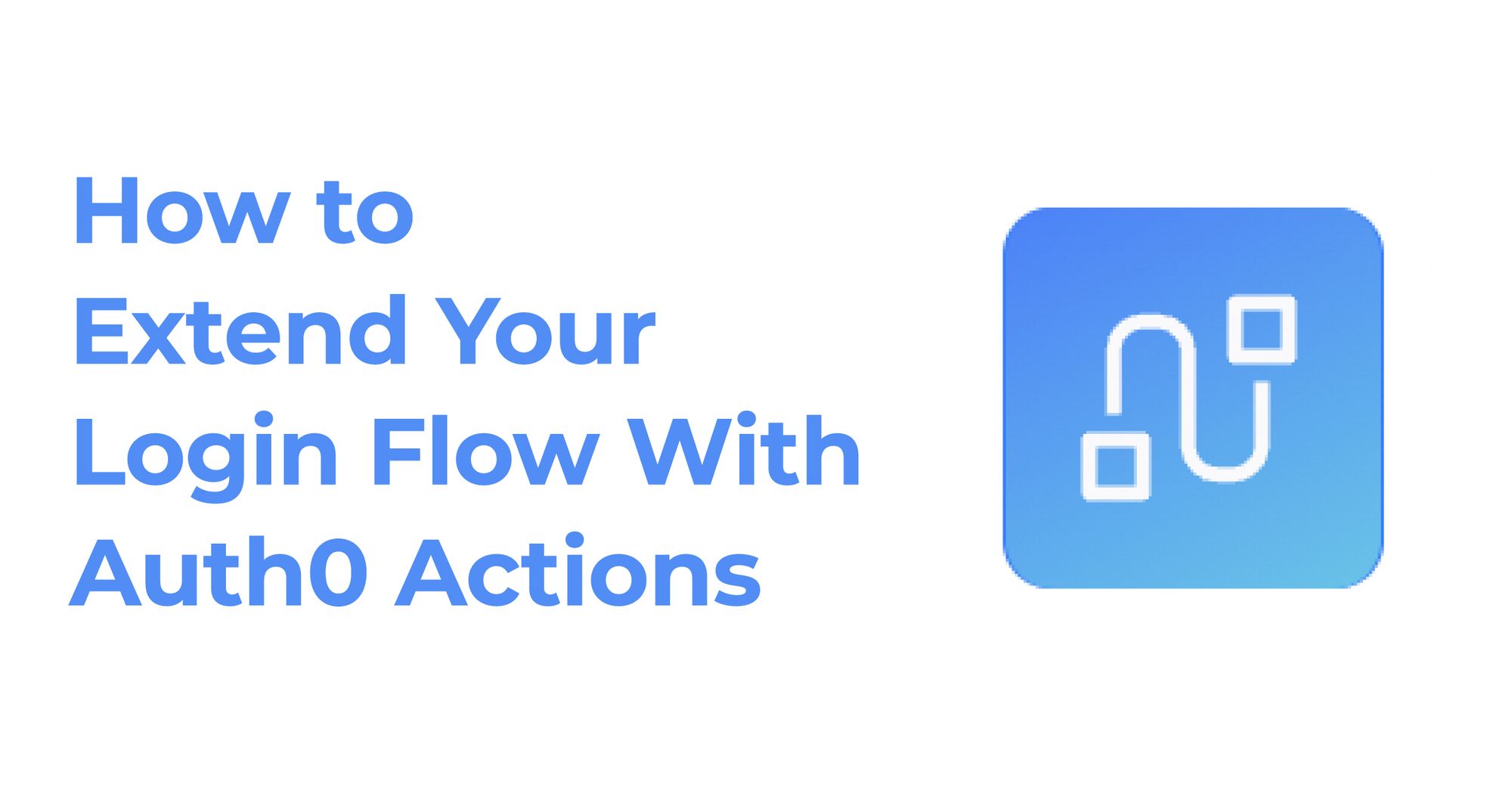I recently attended a training session with the Auth0 Dev Rel team to learn about a cool new feature called Auth0 Actions.
In this article, I am going to explain what Auth0 Actions are, why you'd want to use them, and how to set one up.
What are Auth0 Actions?
Actions are secure, tenant-specific, versioned functions written in Node.js that execute at certain points during the Auth0 runtime. Actions are used to customize and extend Auth0's capabilities with custom logic.
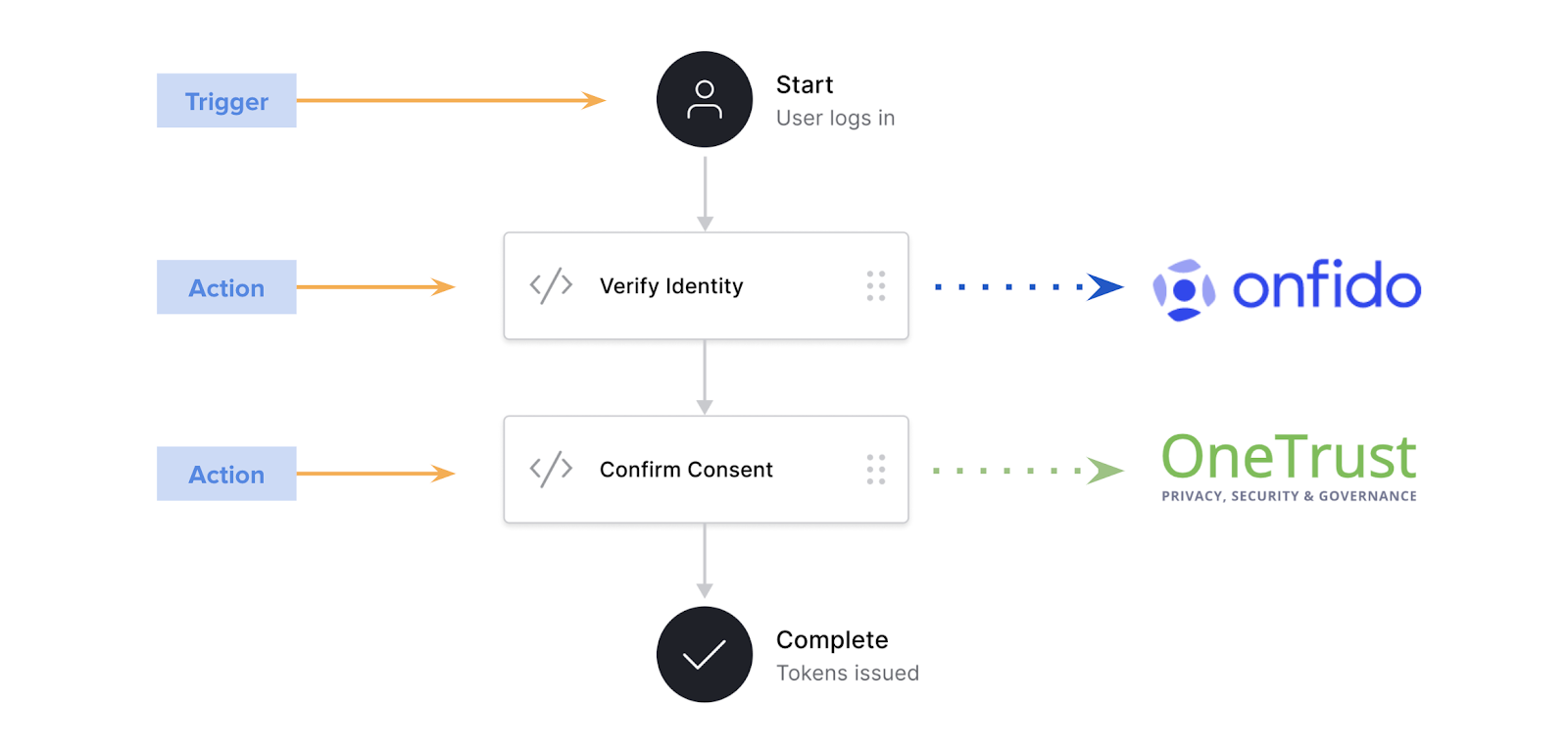
Above you can see a sample flow. In it, once the user logs into the system, you add a trigger to verify the user's identity using Onfido and then confirm consent using OneTrust before completing the login flow and issuing the token.
In brief, an action is a programmatic way to add custom business logic into your login flow.
Why use Auth0 Actions? 🤔
Extensibility – they're built to give developers more tooling and a better experience in their login workflows.
Drag N Drop Functionality – The flow editor lets you visually build custom workflows with drag and drop Action blocks for complete control.
Monaco Code Editor – Designed with developers in mind, you can easily write JavaScript functions with validation, intelligent code completion, and type definitions with TypeScript support.
Serverless Environment – Auth0 hosts your custom Action functions and processes them when desired. The functions are stored and run on their infrastructure.
Version Control – You have the ability to store a history of individual Action changes and the power to revert back to previous versions as needed.
Pre-Production Testing – Your personal Actions can be drafted, reviewed, and tested before deploying into production
How to Set Up Auth0 Actions
For the purposes of this demo, we are going to be creating an action to enforce Multi-Factor Authentication (MFA) for a specific role. I will take you through the process of:
- Creating a role
- Adding users
- Setting up a demo application
- Creating an Action to enforce MFA
- Testing the code
Let's get started:
1) Login to Your Auth0 Account
The first step to secure your application is to access the Auth0 Dashboard in order to create your Auth0 application.
If you haven’t created an Auth0 account, you can sign up for a free one now.
2) Create an Application
Once in the dashboard, move to the Applications tab in the left sidebar.
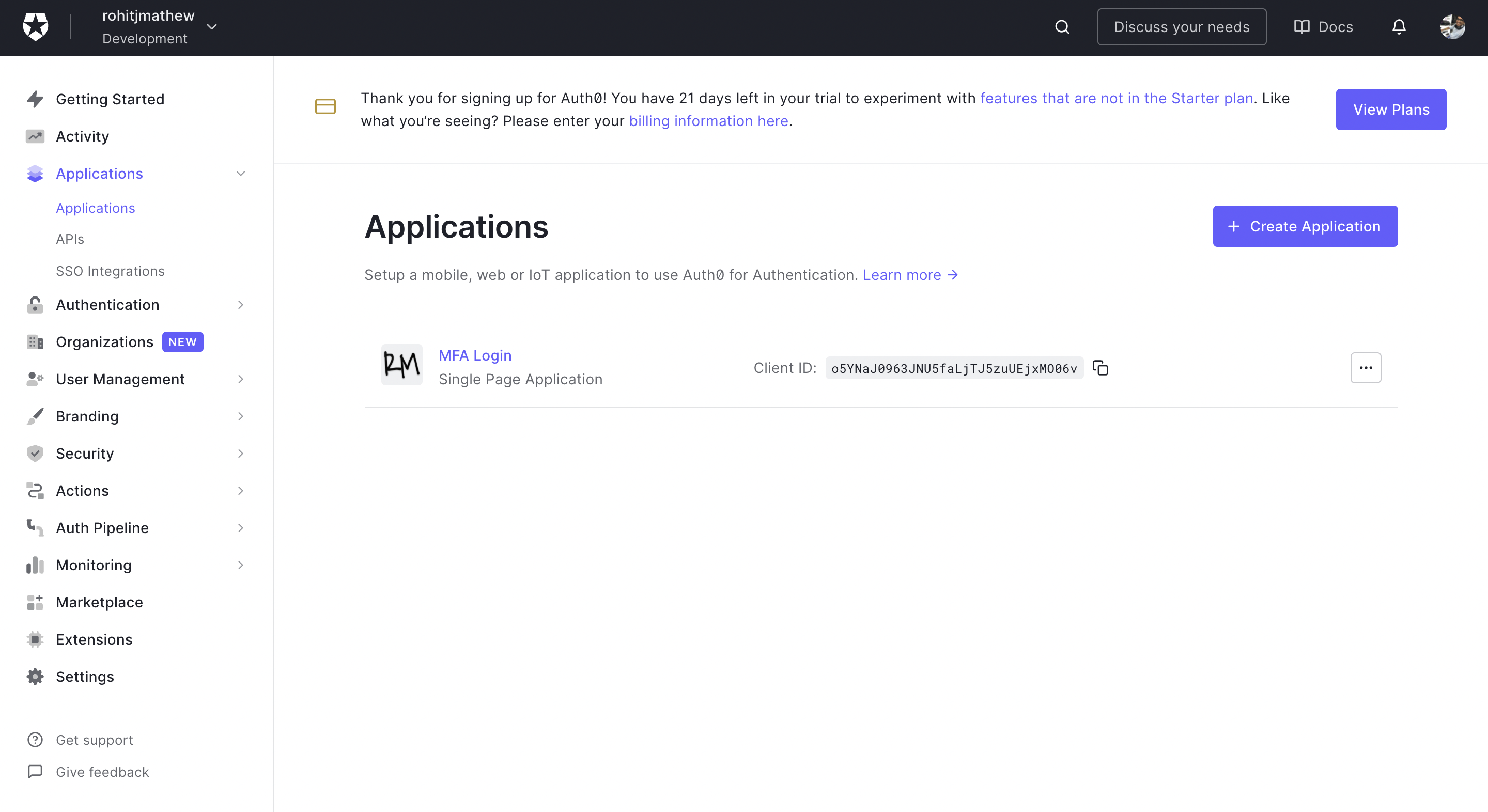
Click on Create Application.
Provide a friendly name for your application (like Test Actions App) and choose Single Page Web Applications as an application type.
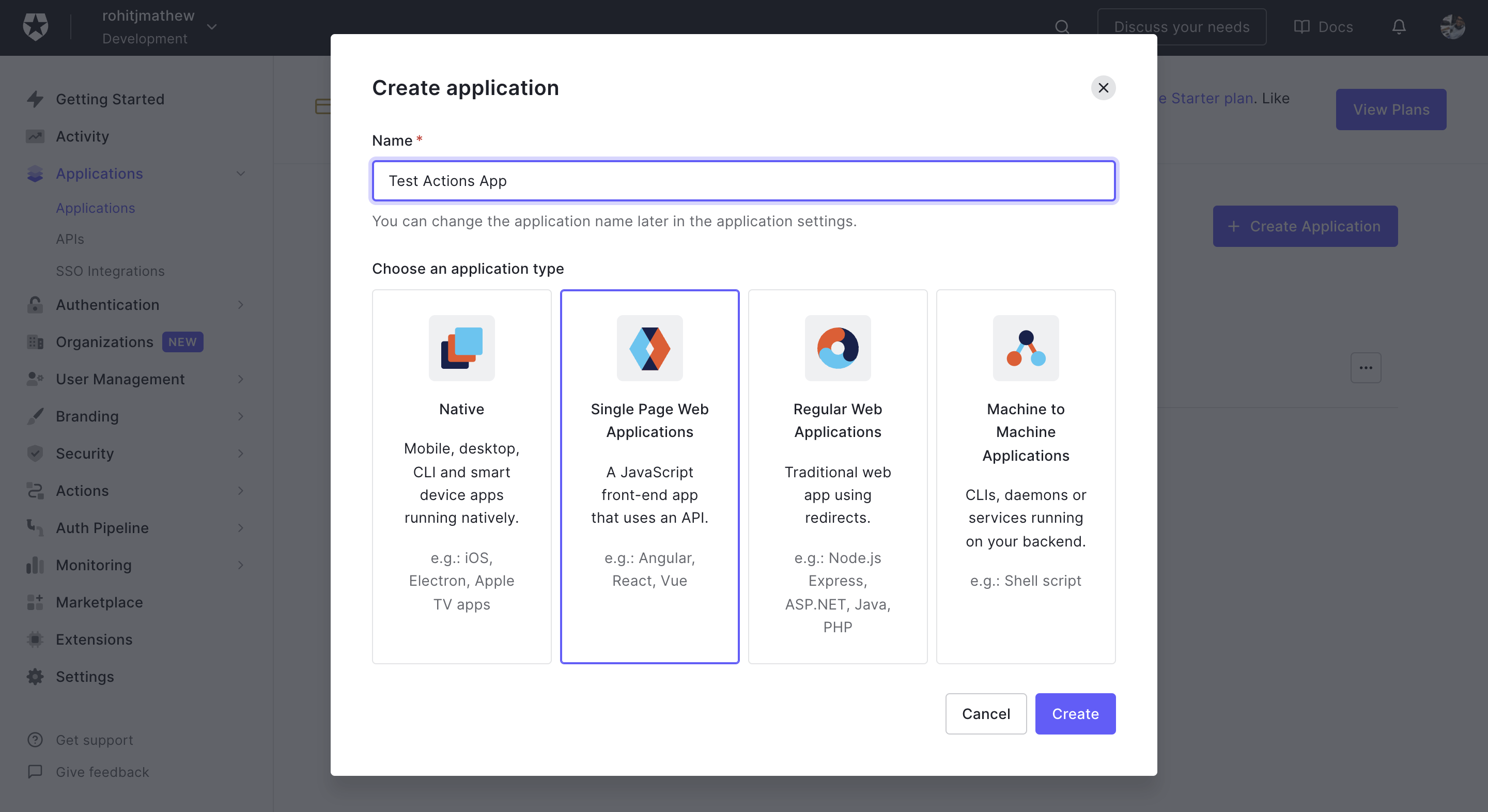
From the quick start tab choose React. Download the sample app. This will have most of the necessary details already in place.
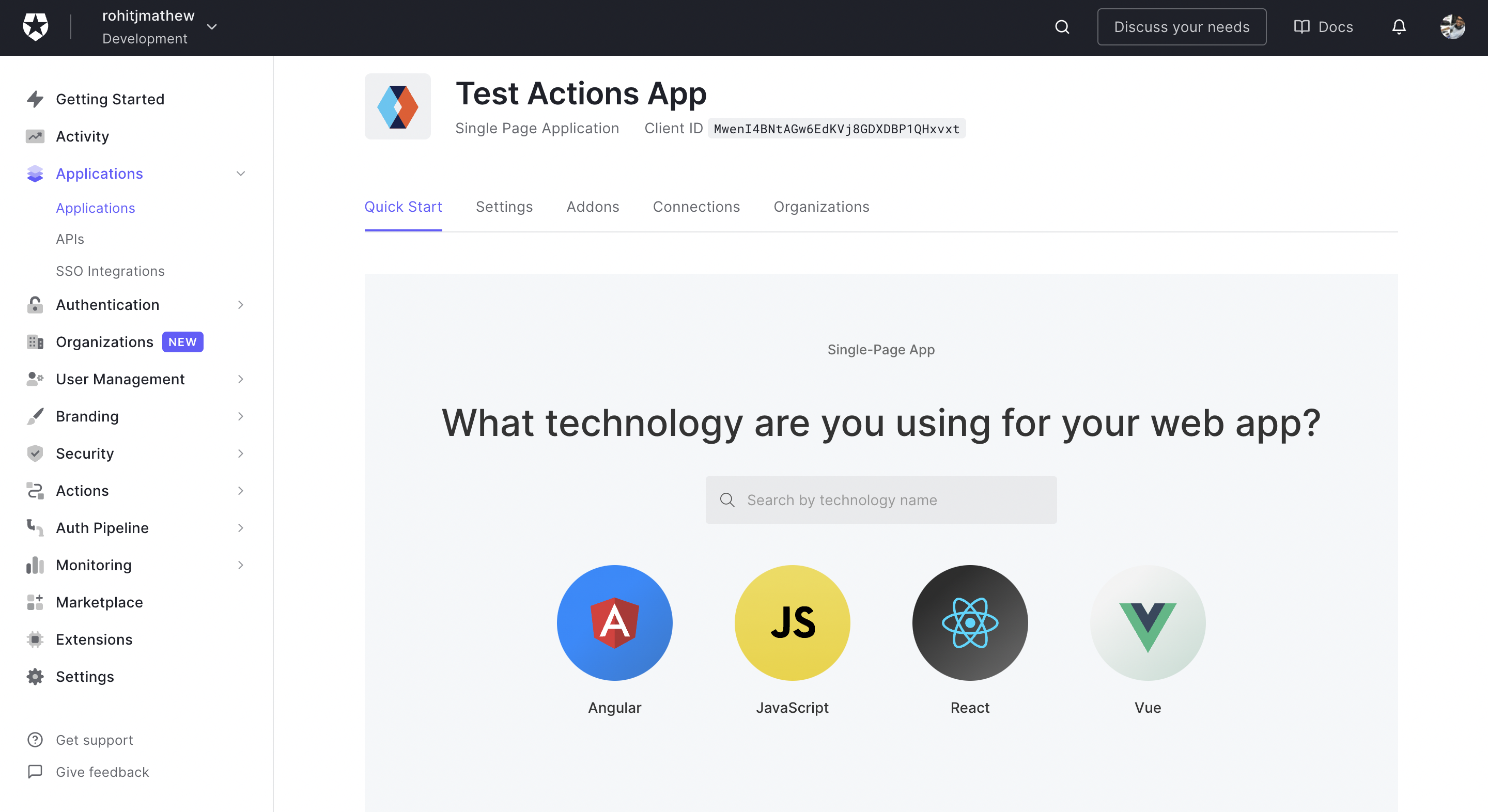
We also need to set up a few settings for this application. Choose the Settings tab (next to quick start). Add your localhost URL to the following places:
- Allowed Callback URLs
- Allowed Logout URLs
- Allowed Web Origins
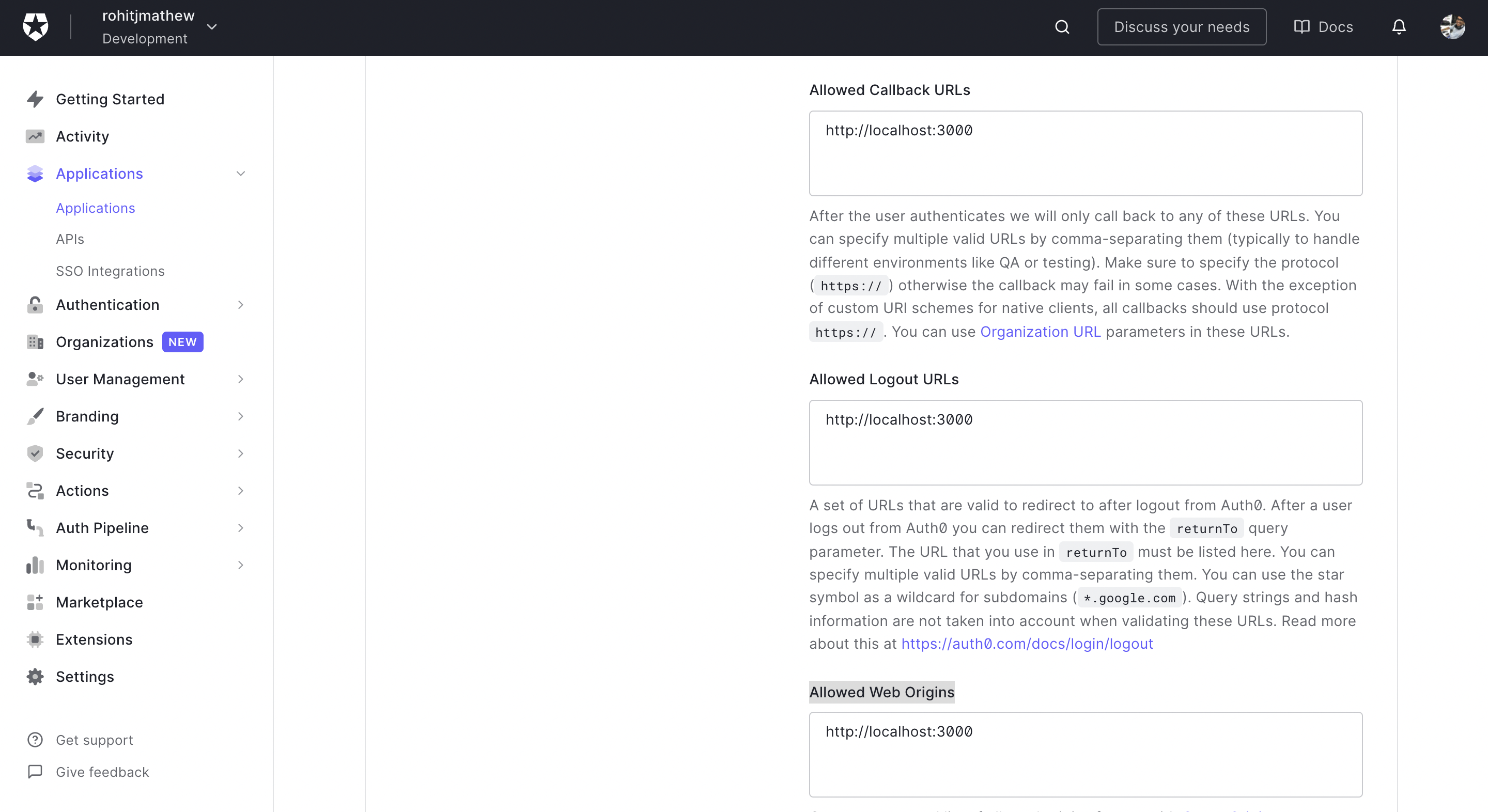
3) Setup Application
Unzip the code we downloaded in a location of your choice. Then open it in the code editor of your choice.
Cross verify that the details of your application are correctly configured in src/auth_config.json.
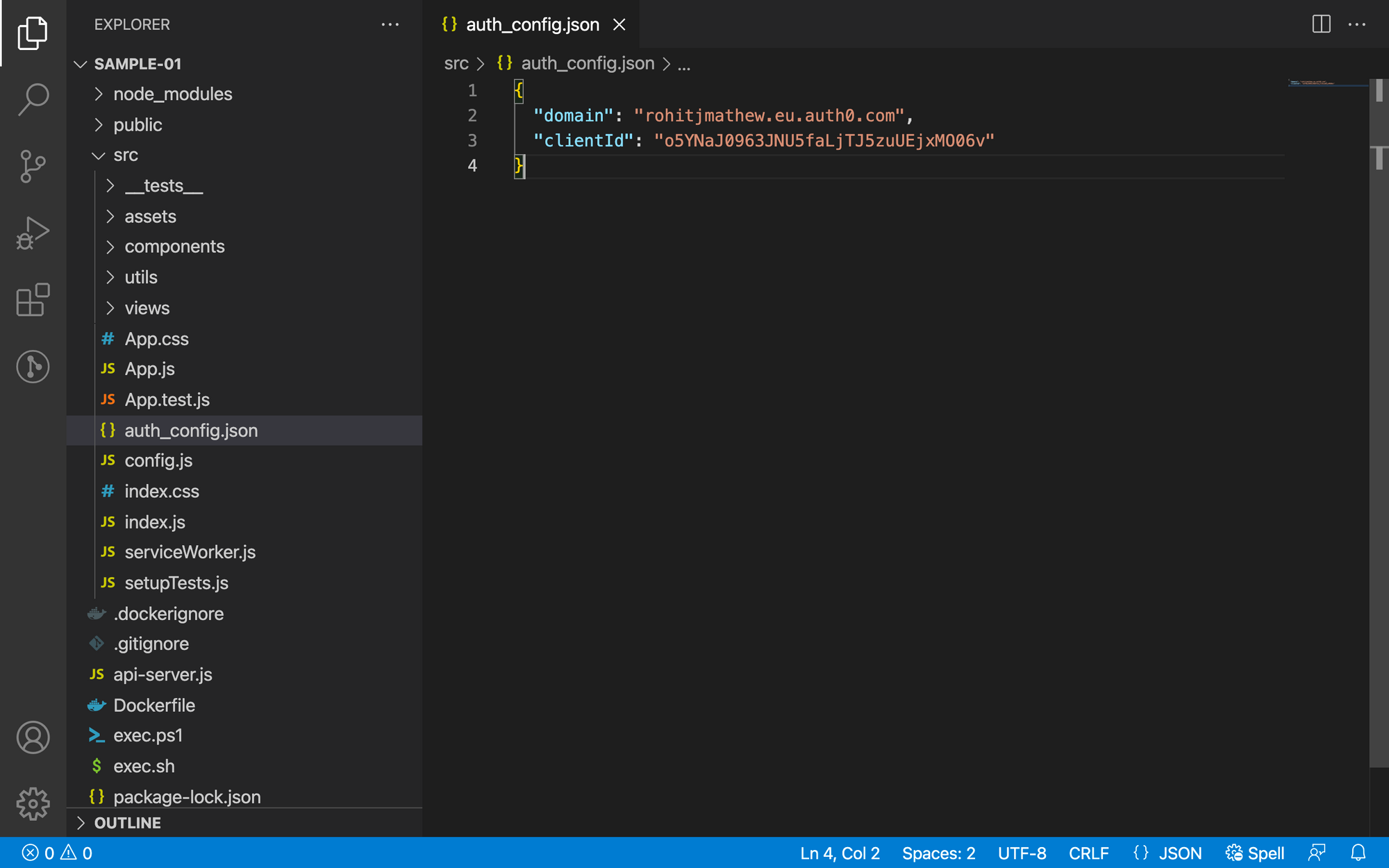
We will run this code locally, so install the dependencies and run it in dev mode (so we have hot reload enabled). To do this, npm install & npm run dev.
Once the application starts you should be shown an SPA like below. If you click on Log In it will take you to your login box.
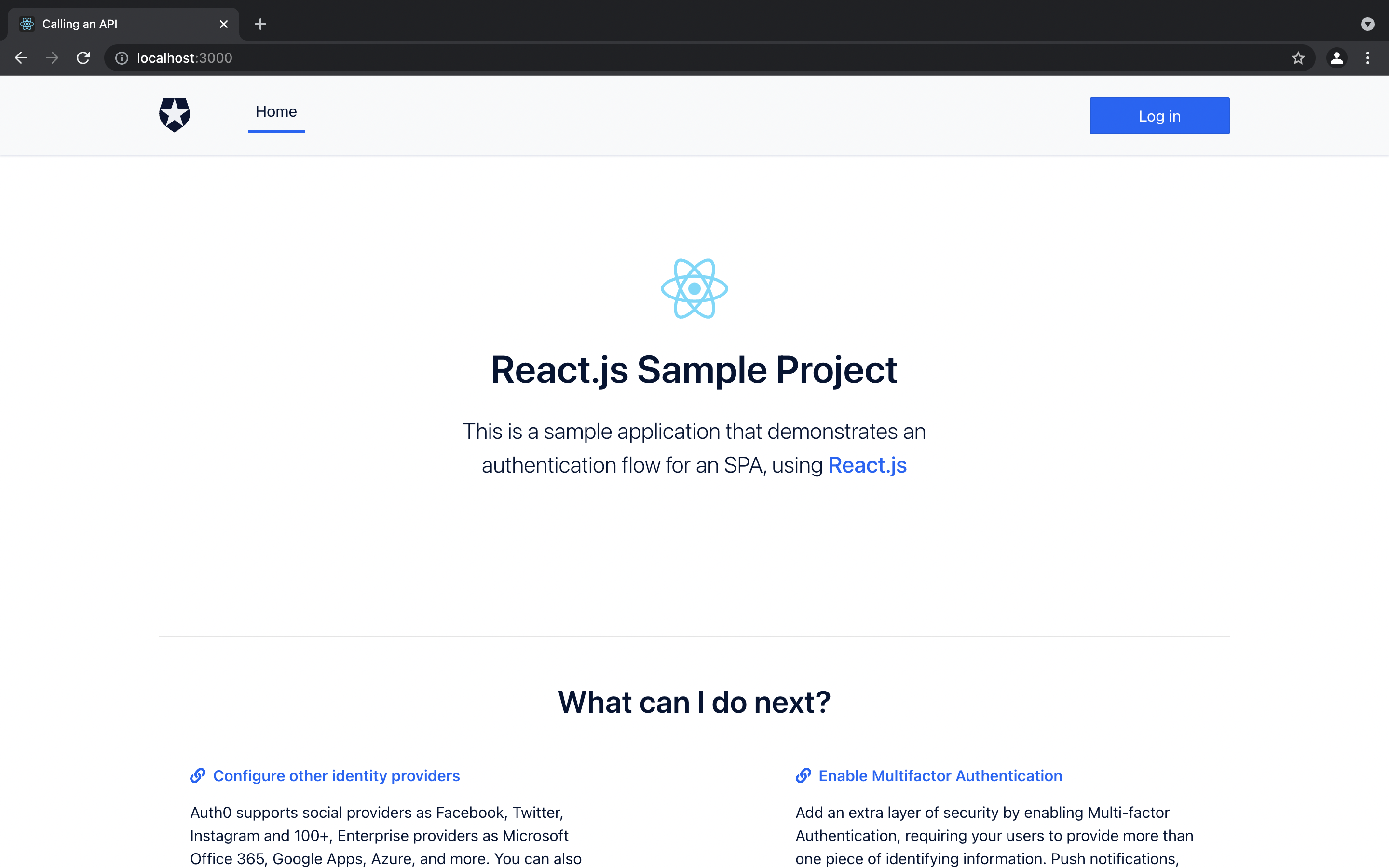
4) Setup Users and Roles
Click on the User Management tab in the left sidebar.
Go to the Users tab and click on the Create User button. We need to create 2 users:
- Admin User
- Test User
Remember these credentials as these are the test users we will use for this demo.
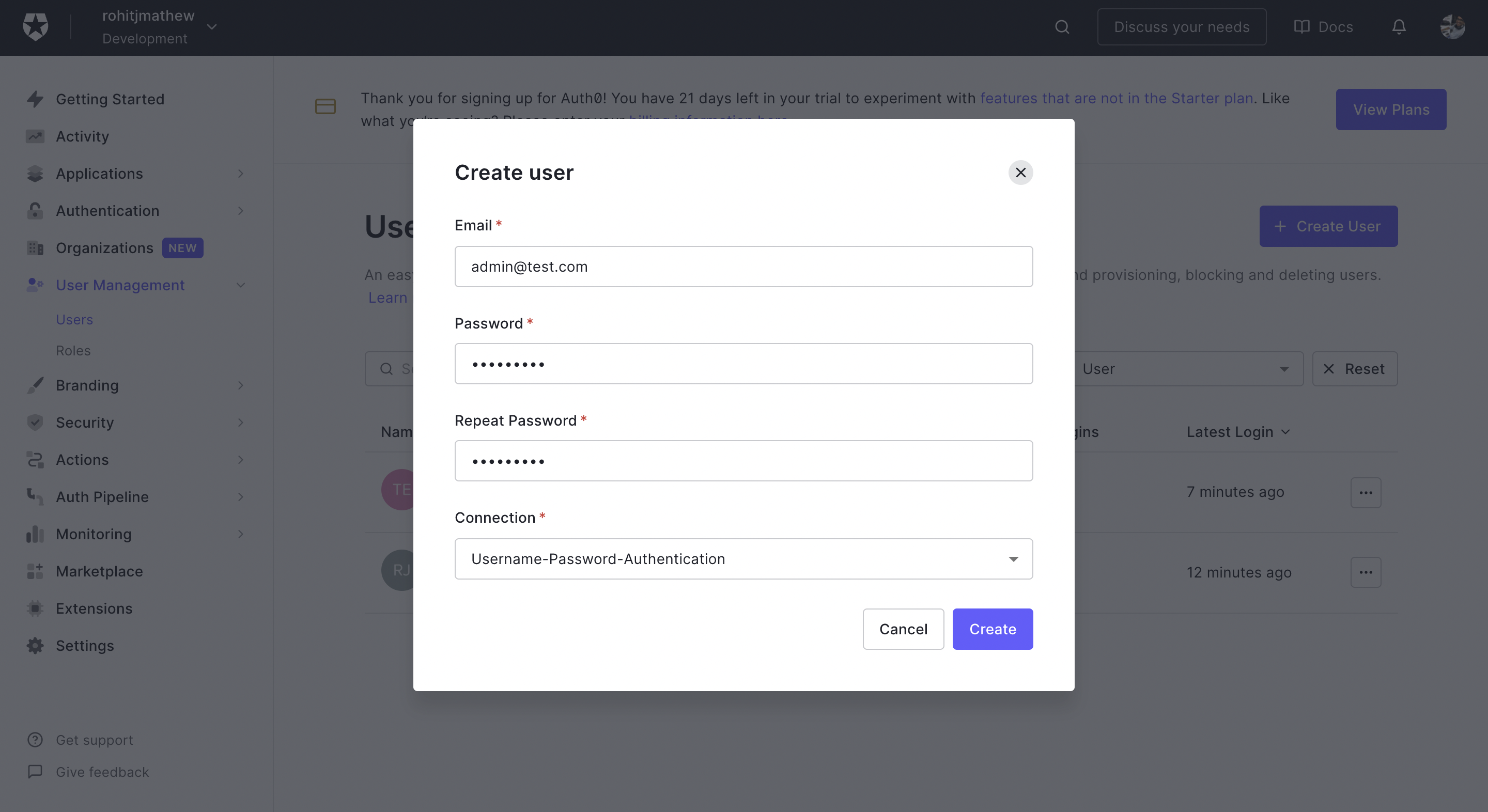
Go to the Roles tab and click on the Create Role button. Call the role Admin and, once it's created, go to the user tab and assign it to your Admin user.
Once this is done go back to your locally running SPA and try logging in with one credential. You should be able to access a user portal like below:
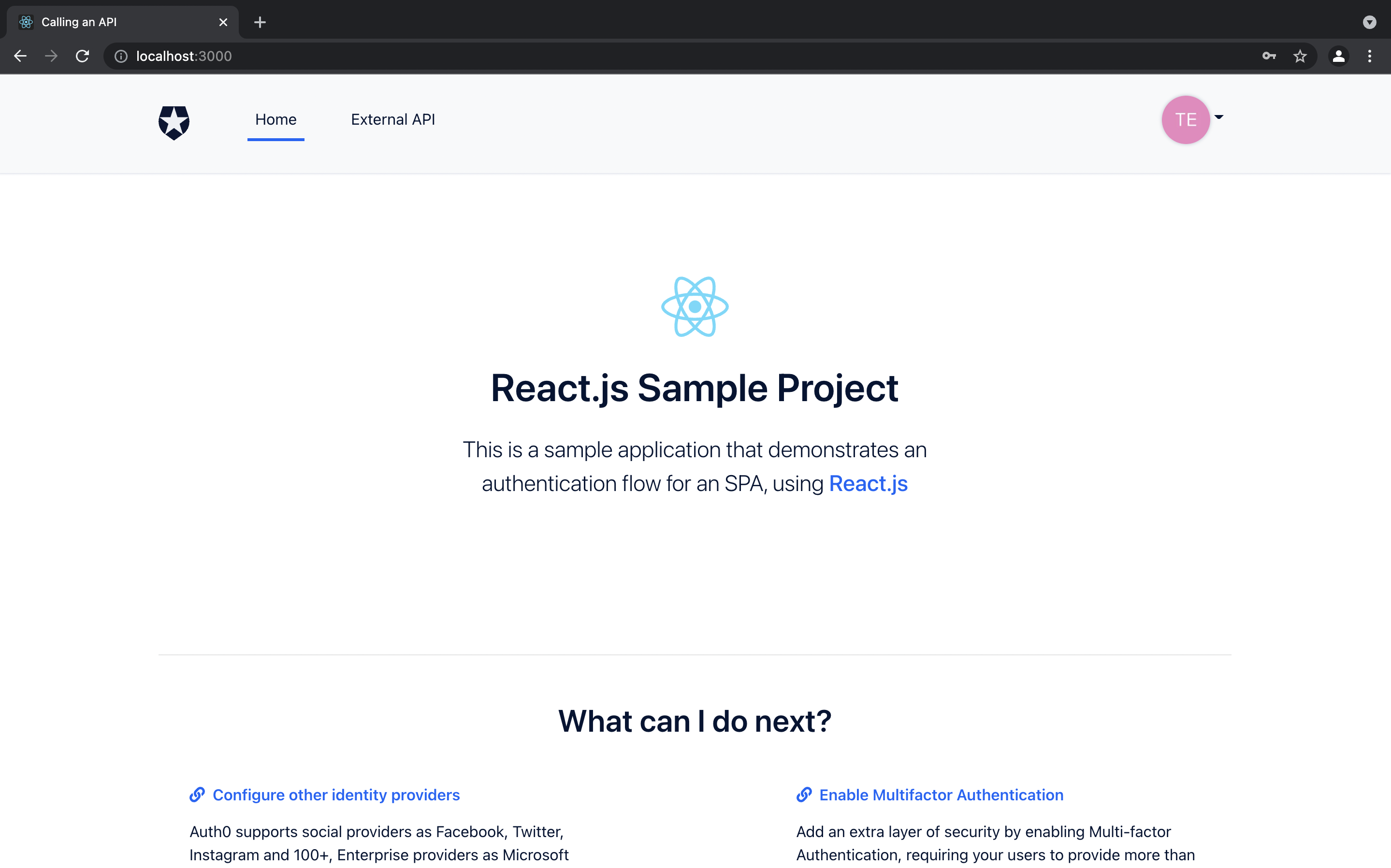
5) Setup Actions
Click on the Actions Tab in the left sidebar. Then go to the Flows category.
Select the Login Flow. This will run the flow of an action once the login process in your login box is complete.
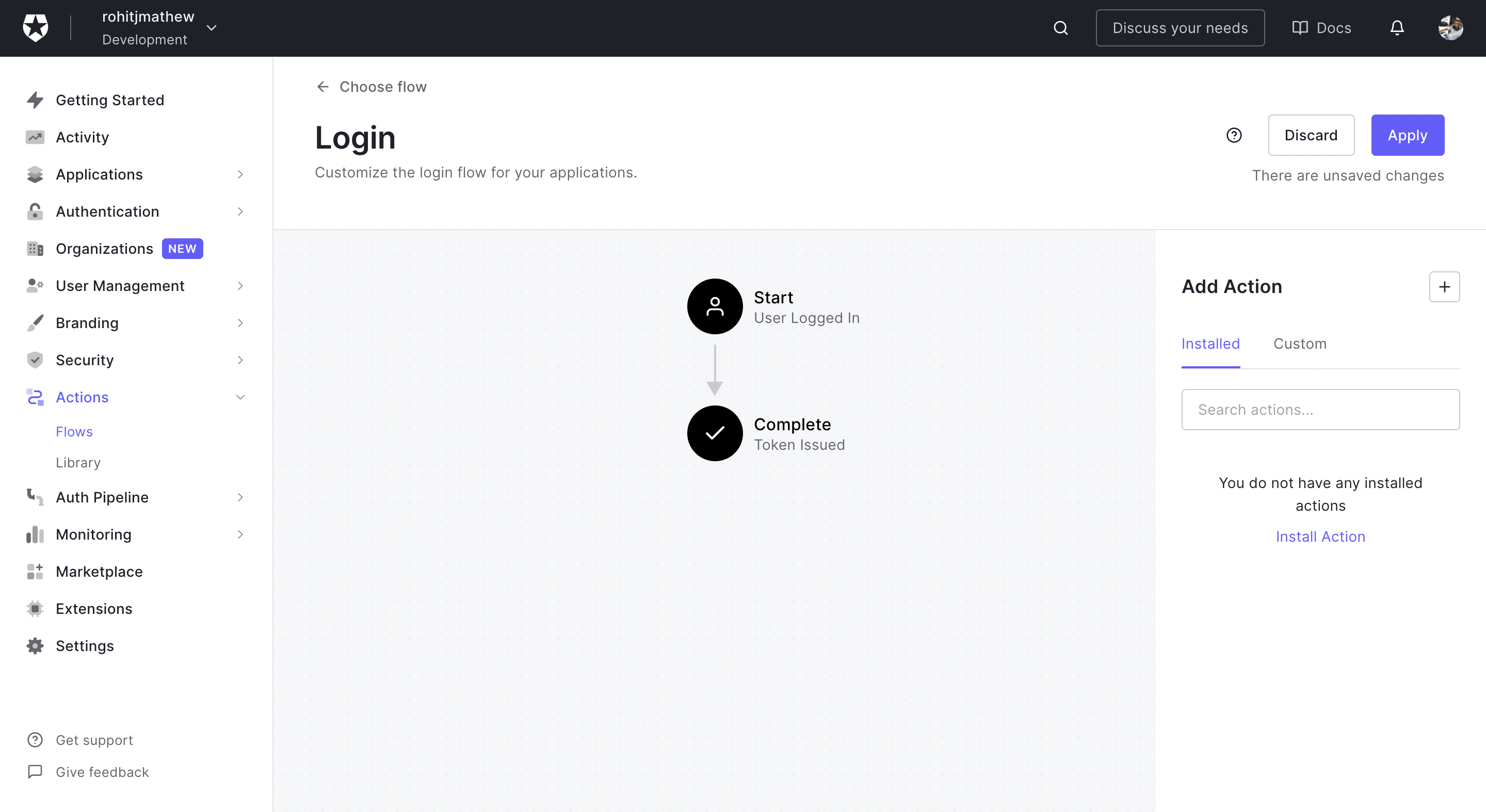
Click on the + button in Add Action and select Build Custom.
Name it MFA for Role and leave the rest as is.
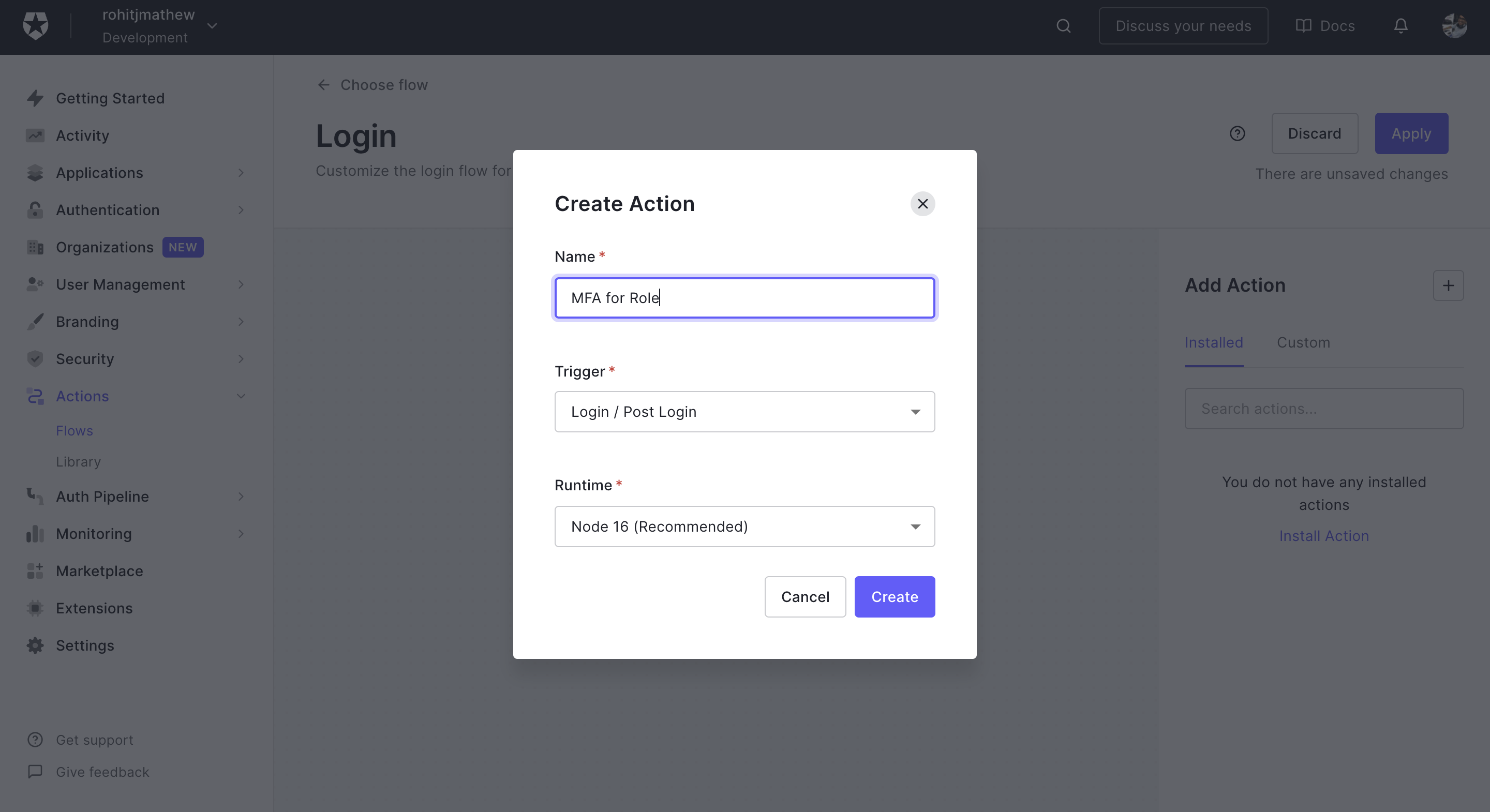
Once created, you'll come to a screen as follows:
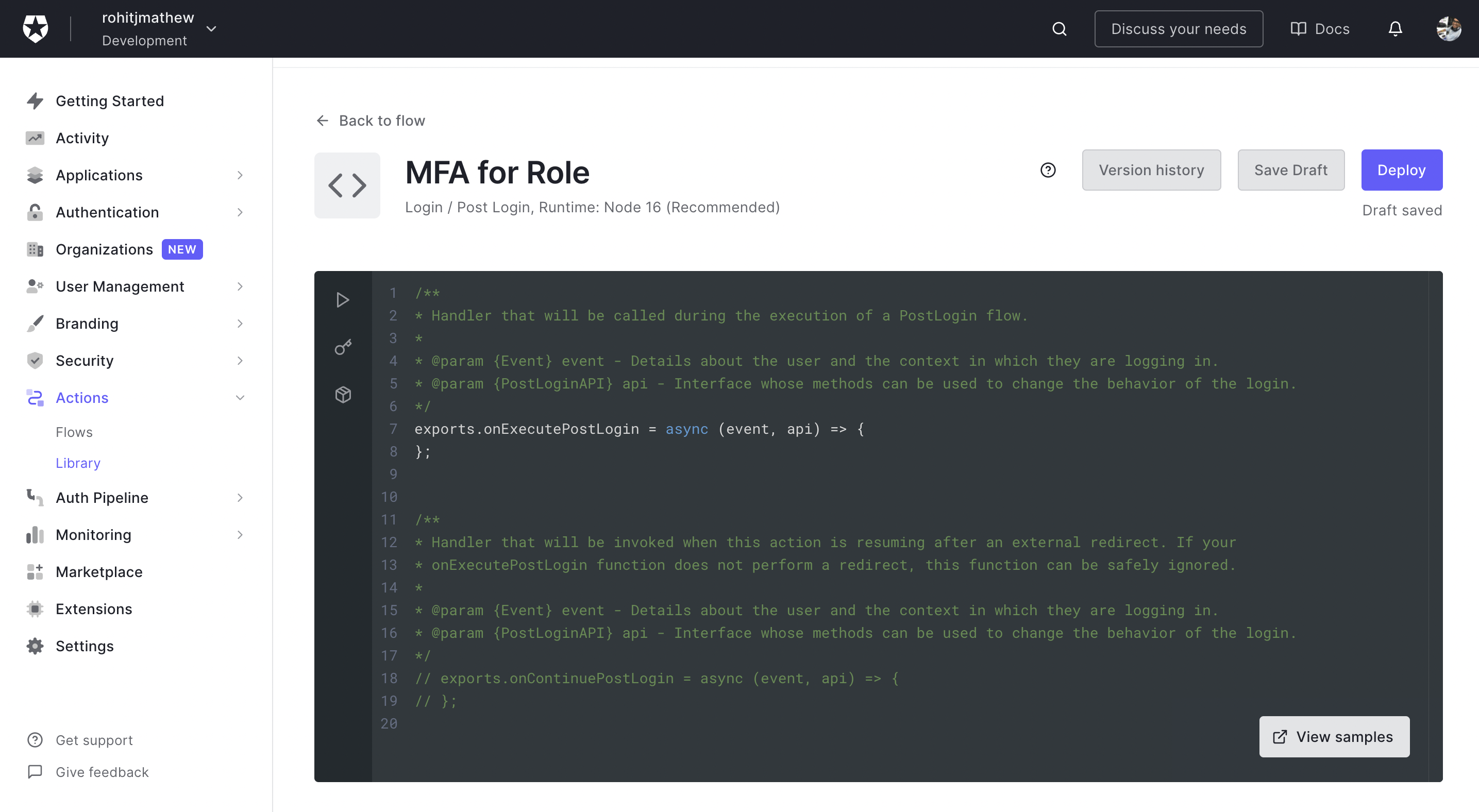
Add the below code into the onExecutePostLogin function:
if (event.authorization != undefined && event.authorization.roles.includes("Admin")) {
api.multifactor.enable("any");
};
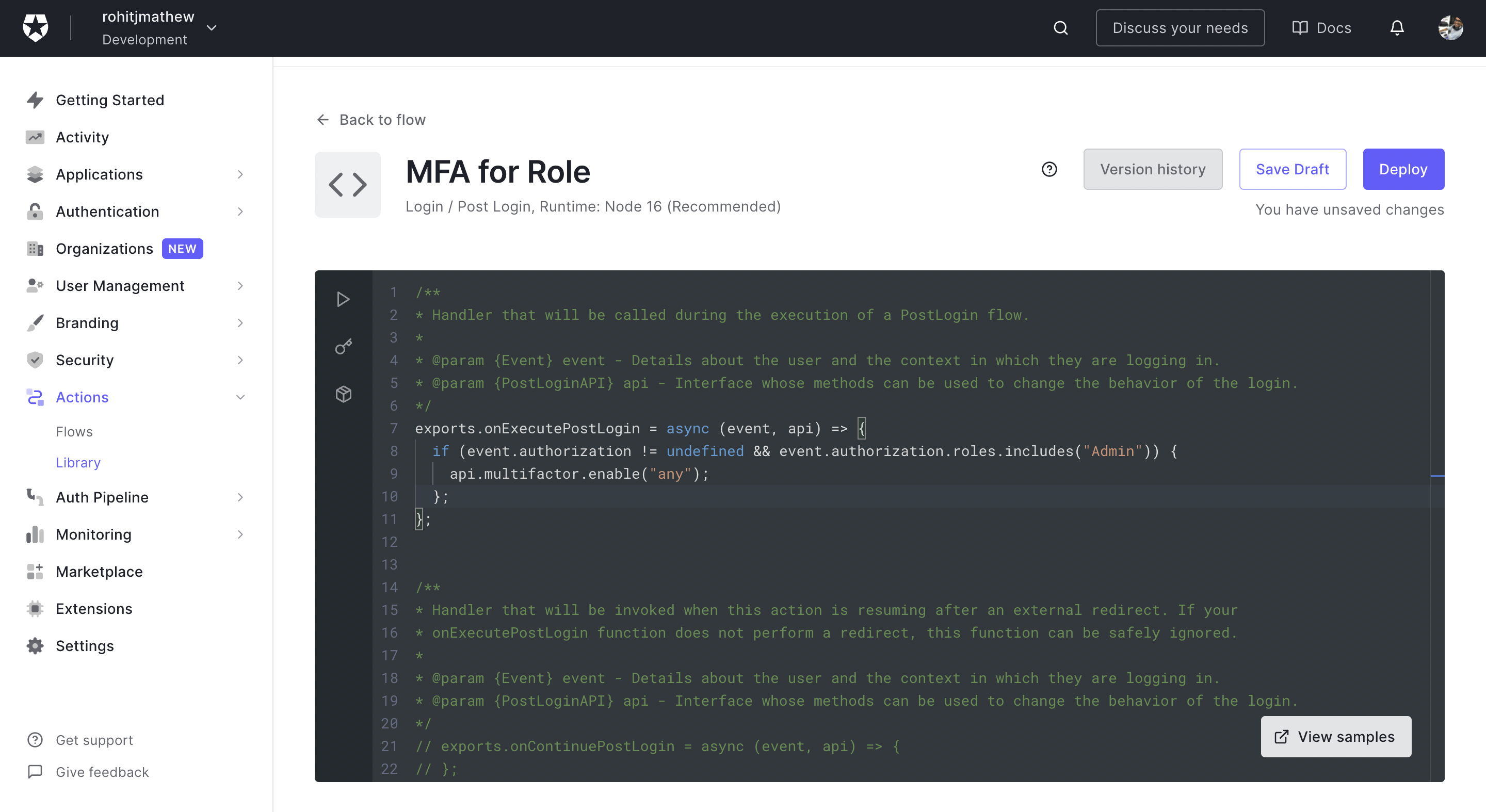
On the left side you can see a play button. This is your testing environment inside the actions editor. You will find the event object in which you can test the actions flow by adding Admin to the authorization.roles array.
When you add the Admin role you should see a response with MFA like below. When it's not present you should get an empty array.
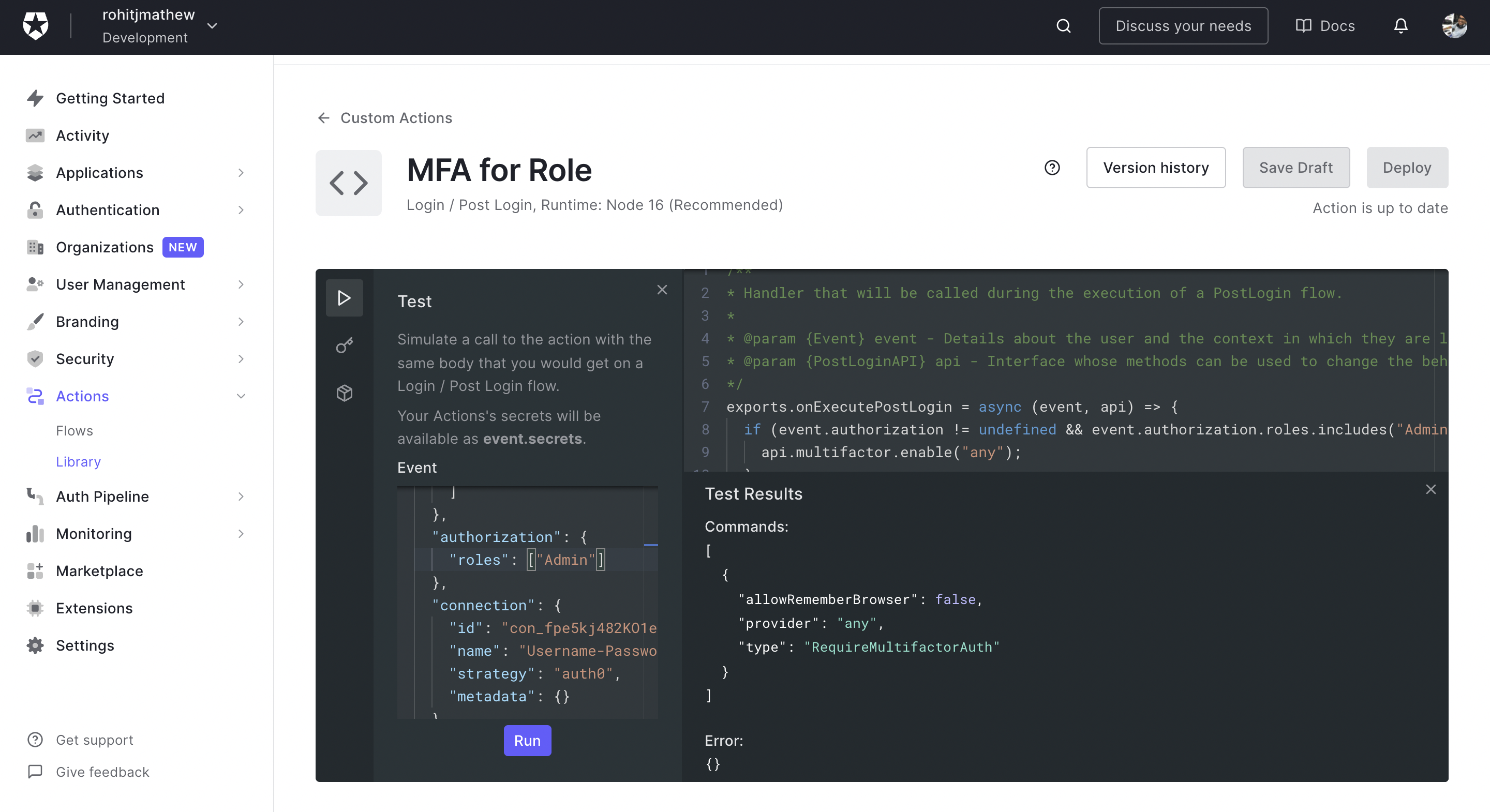
Click on save draft and deploy.
Go to the flow now and click on the custom actions tab on the right and you should be able to drag and drop the MFA for Roles action into the flow. Click on Apply so that this new flow will work with your login box.
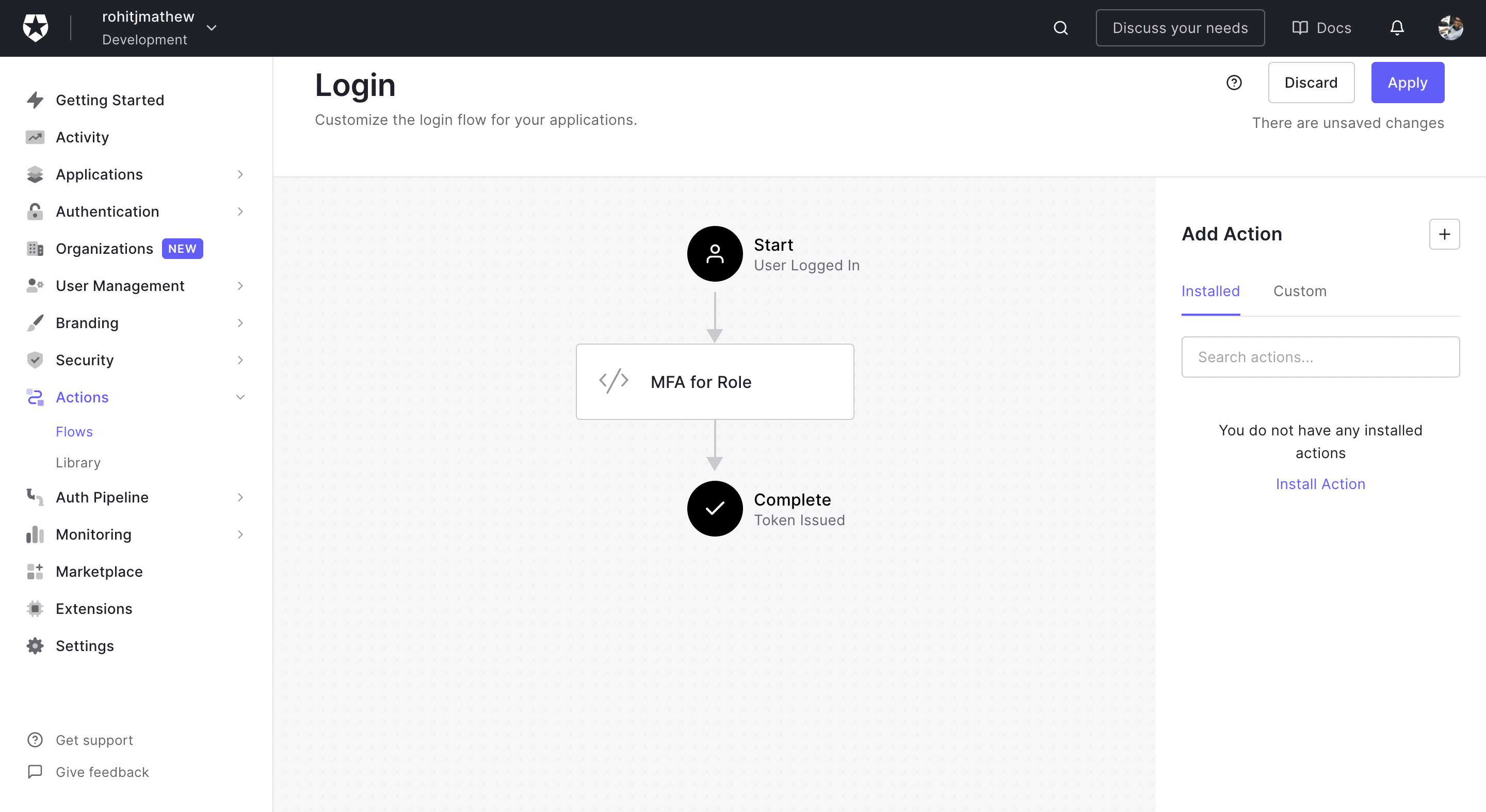
You will also need to enable MFA on the Auth0 dashboard.
Open the Securities tab and choose multi-factor auth. In the next screen, enable One-time Password. This will let users use an application like Google Authenticator for a one-time password.
There are other factors you can enforce as well, like SMS or Email-based OTP, but for this demo we will be using just the one-time password.
In the policies section leave everything as is and save your changes.
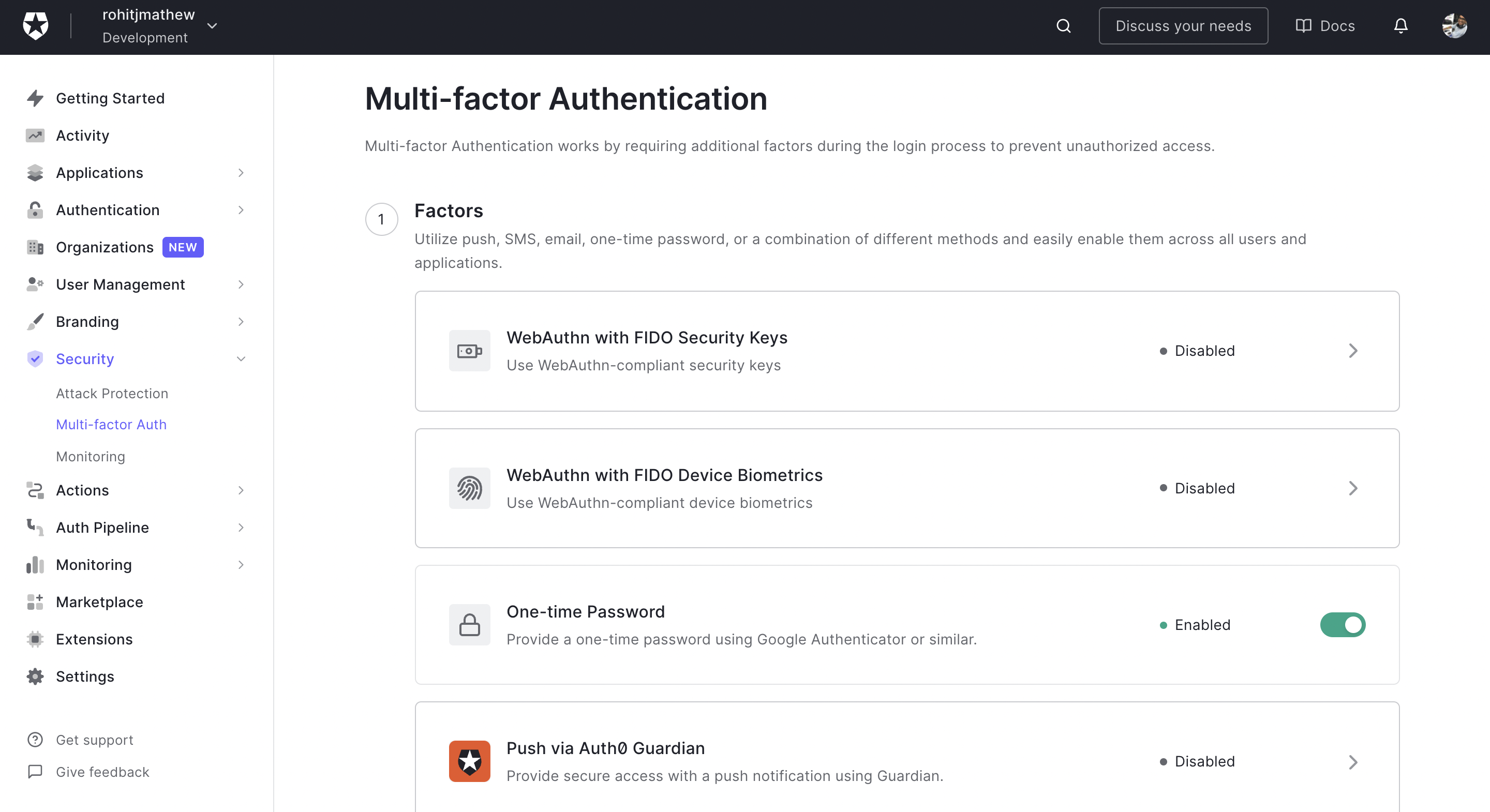
6) Testing With Your Application
Now when you go to login on the locally running application, you should be triggered to do a MFA for the admin user. So let's test that.
Click on login and redirect to your login box. If you are logged in already, log out and then do the same.
Enter your admin users credentials:
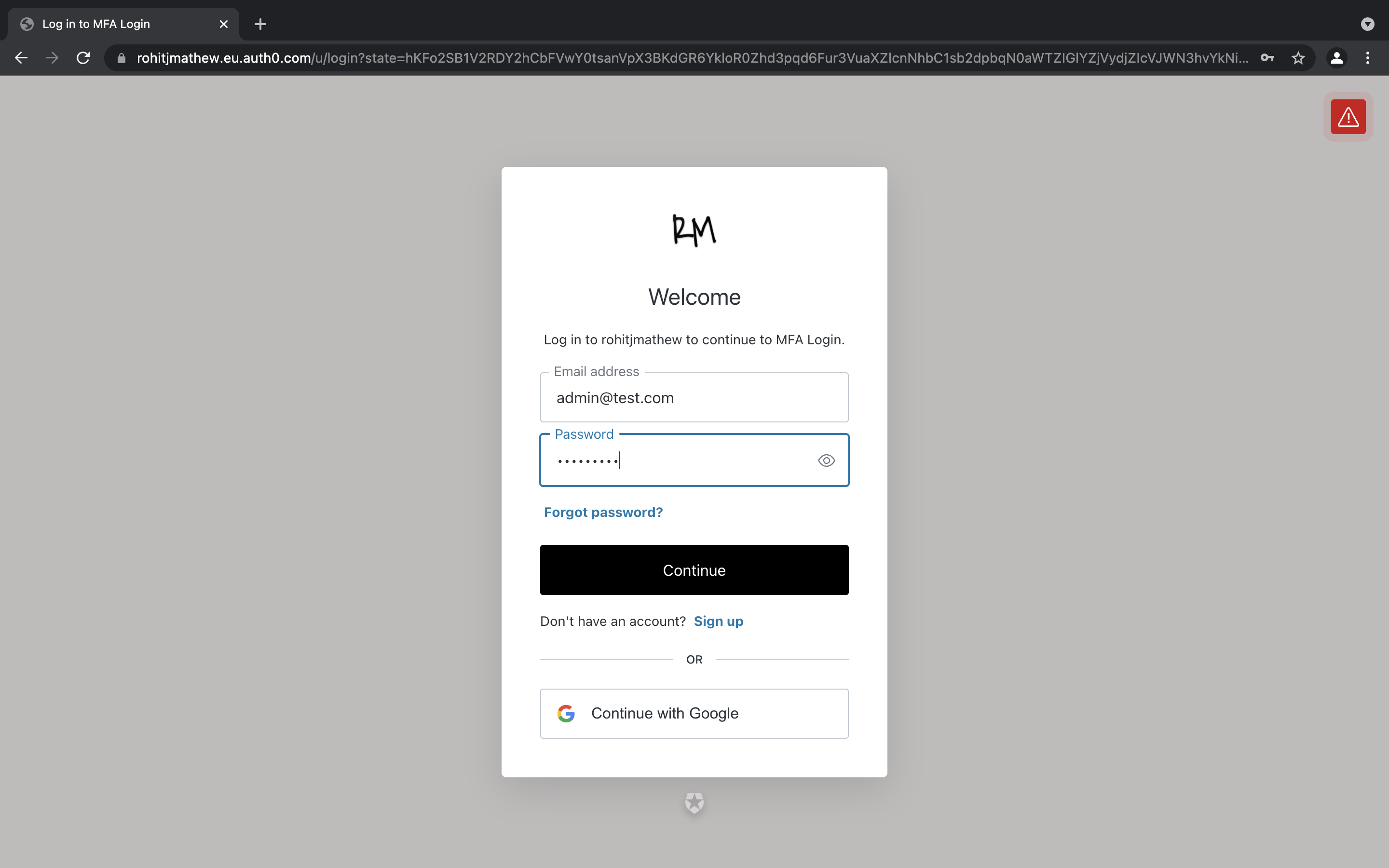
Once the login goes through, you will be prompted to authenticate with your preferred authenticator app. I used google authenticator and entered my OTP.
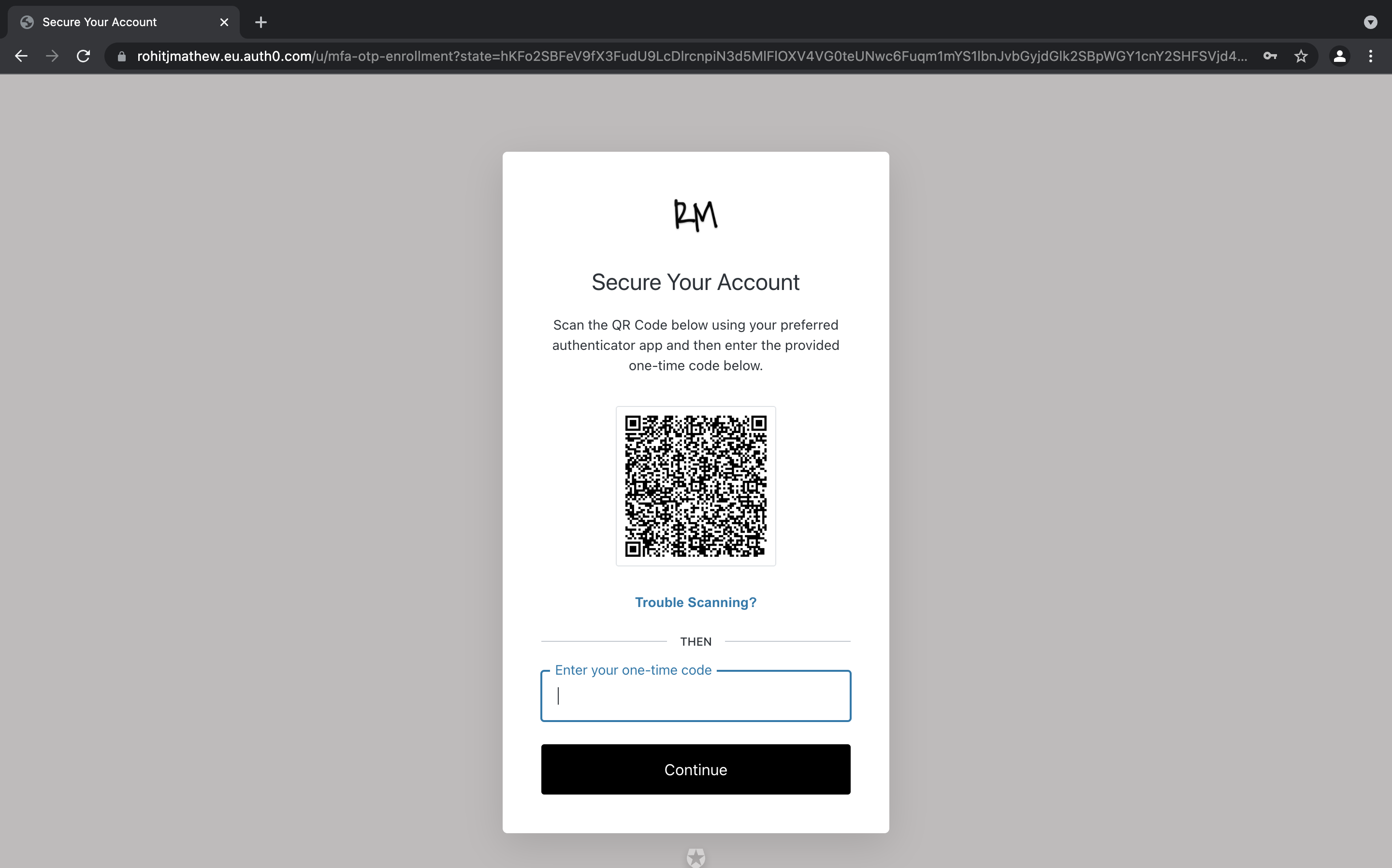
You will then be asked to consent to share your user data with the application.
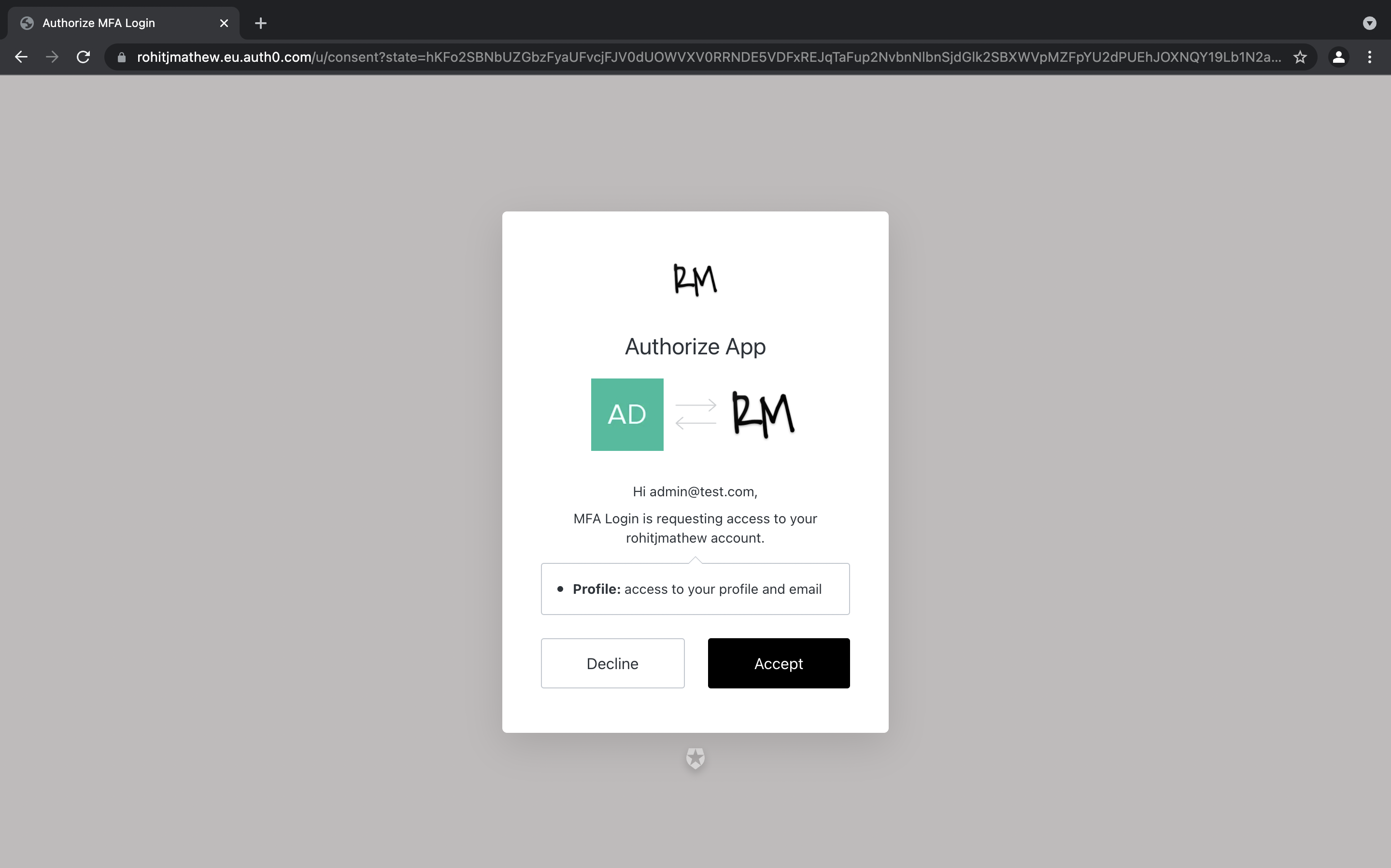
Once you accept the above, you should be logged in.
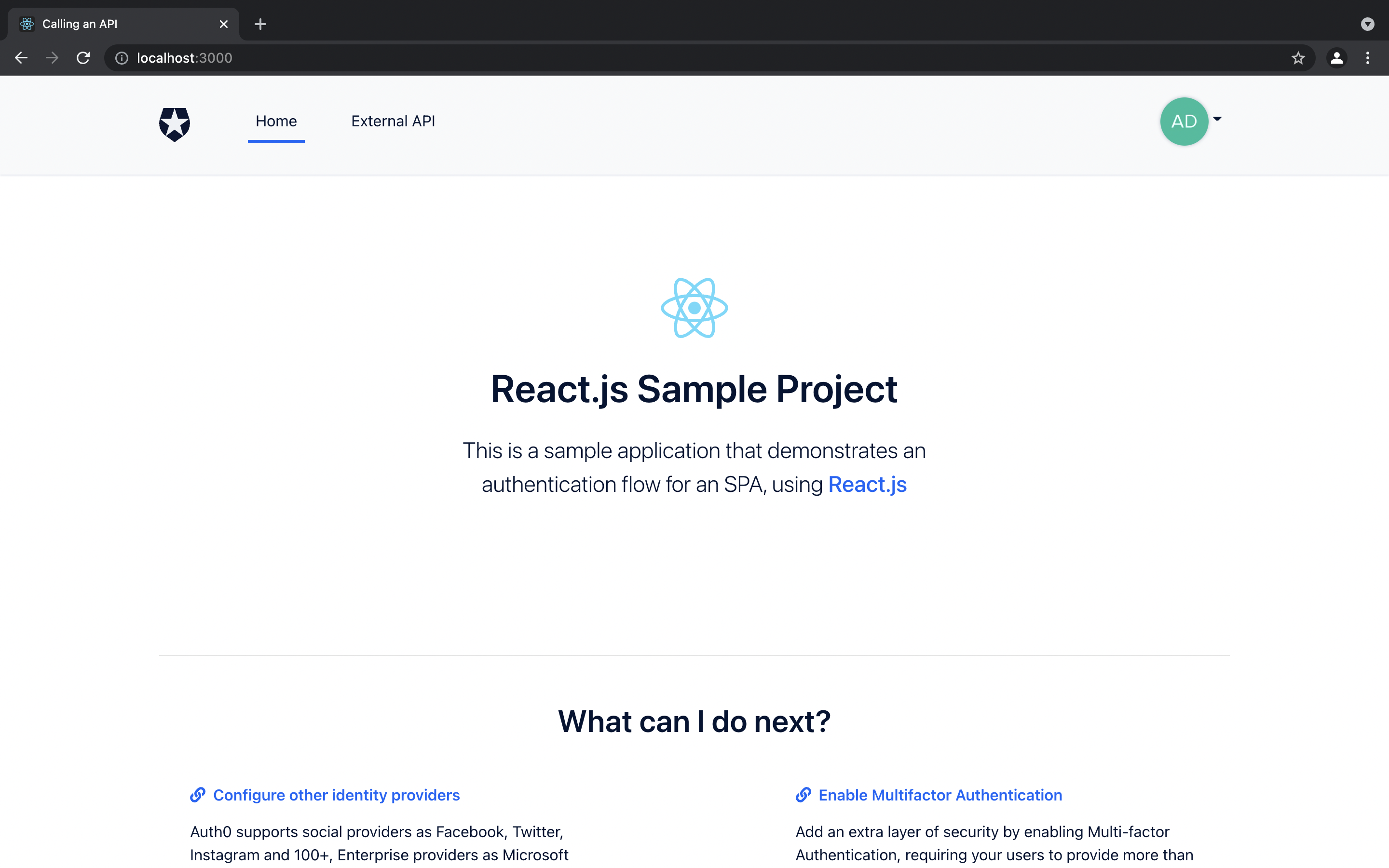
If you try the same flow with the test user, you will notice that you are directly logged in after the consent page and no MFA request was triggered.
This is because in our actions code, as shown below, you can see that we check to see if the user roles have the Admin role. If so, then we ask Auth0 to trigger am MFA workflow with any of the enabled MFA use cases of the tenant.
if (event.authorization != undefined && event.authorization.roles.includes("Admin")) {
api.multifactor.enable("any");
};
Conclusion
Congrats! You have just created a custom Auth0 Actions flow and tested it. This was a simple example to help you understand what Auth0 Actions are, and how they can be built and used in your workflows.
There are many more complex flows you can build, and you can find some examples provided by Auth0 below. Just click on the trigger and you will find specific examples.
Thanks for reading! I really hope that you find this article useful. If so, please share it so others can see it.
Thanks for reading! :)
P.S Do feel free to connect with me on LinkedIn or Twitter
Appendix
The following sources were really helpful in writing this article:

